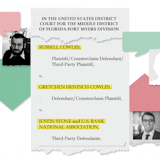WATERTOWN, Minn. – Half a century later, Tony Vanderlinde remembers the sight "plain as day."
Baling hay on his family's dairy farm near the border of western Hennepin and northern Carver counties, he came over a hill and saw nuclear missiles pointing to the sky.
"There were two sets of three or four missiles, and they had them elevated," Vanderlinde recalled recently. "And I didn't know if we were going to get attacked, or what."
An attack never came. But for more than a decade at the height of the Cold War, the Twin Cities were protected by a quartet of nuclear missile installations ringing the metro area.
In the days before intercontinental missiles, any Soviet attack would have come from bombers taking the polar route across Canada. The four missile sites — in Watertown, Bethel, Farmington and Roberts, Wis. — were designed to send Nike-Hercules missiles, armed with nuclear warheads, into the atmosphere, where they'd explode and blow the enemy airplanes out of the sky.
It's a frightening prospect to look back on. At the time, however, people in this rural area about 40 miles west of Minneapolis took it in stride.
"We knew what was going on," said Joe Weiland of St. Bonifacius. "You'd see Army trucks and guys in uniform.
"No one was really afraid of it. It was kind of cool, actually."


